Autumn in South Korea
Explore the beauty of South Korea’s autumn with this itinerary. Visit Seoul, Gyeongju, Busan, Jeonju, Mokpo, and Jeju to enjoy the stunning fall foliage and diverse landscapes.
South Korea is beautiful in autumn, and you don't need to go into the mountains or National Parks to enjoy it. We saw the transformation unfold during our trip last year: from the first autumn colours in Seoul to more vibrant hues in Gyeongju and Jeonju, before walking through fully coloured forests on Jeju Island.
We may have been a bit early for peak autumn in some places, like Busan, but from the 20th of October, you can expect warm autumn colours and pleasant weather across the country.
Comfort food in Seoul
In my previous post, I shared tips for walking & hiking in Seoul. This time, I’m focusing on food recommendations for the city. With autumn upon us, who doesn’t need a bit of comfort food?
My obsession with Korean food began when I had my first bibimbap at a Japanese/Korean supermarket in Amsterdam. It looked good on the menu and turned out to be delicious, leaving me smiling behind my bowl. Around the same time, a colleague married to a Korean woman often brought Korean food for lunch, while we had boring sandwiches or soup (a Dutch habit). Soon, he noticed my enthusiasm and started bringing homemade dishes for me too—what a treat!
I eventually began cooking Korean food at home and even make my own kimchi.
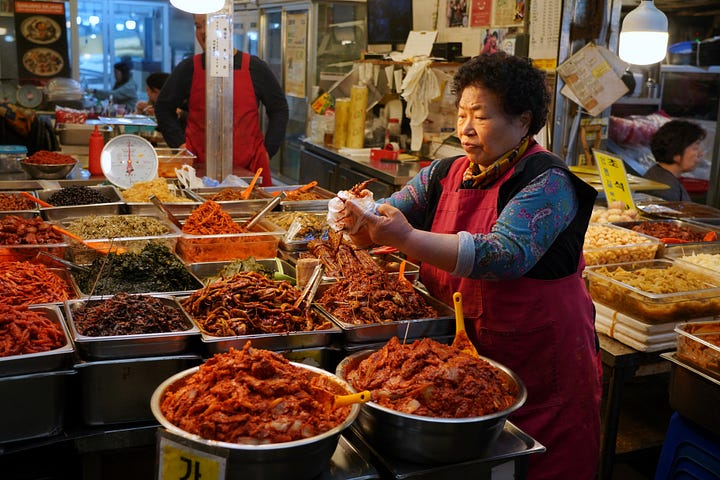
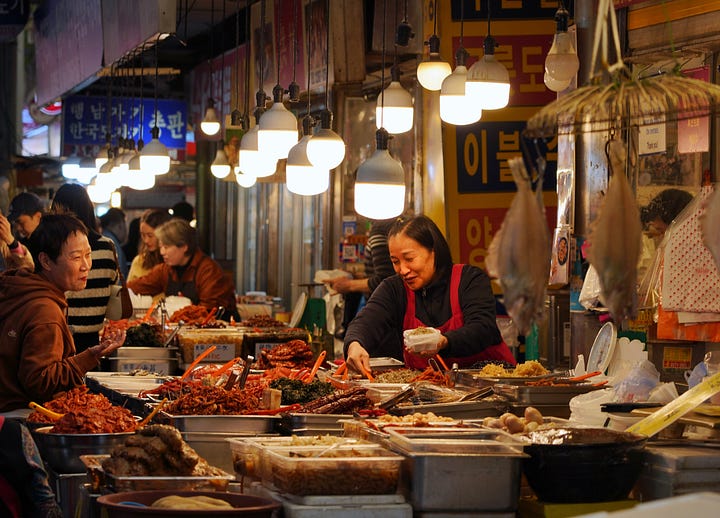
On our first evening in Seoul, we enjoyed street food like fishcake, tteokbokki (rice cake), dumplings, mung bean or scallion pancakes, and tofu with kimchi. In Korea, drinks must be paired with food (you simply can’t order just drinks); dried fish, seaweed, and fermented vegetables are popular snacks. Drinking is a social activity, with beer, soju, and makgeolli (fermented rice wine) shared. After work, employees are expected to drink with their boss, often taking turns out of self protection. We saw people struggling to walk after some heavy drinking.
Korean barbecue carts are a common sight on the streets, especially in busy after-work drinking areas.
Food tips for Seoul:
Gwangjang Market is bustling and great for tasting Korean food.
Namdaemun Market has a restaurant alley, also worth a visit.
Vegetarian food can be challenging. Vegan restaurants don’t serve alcohol due to religious reasons. We dined at A Flower Blossom on the Rice, which offers good vegetarian options and serves beer.
HappyCow (also as an app) is helpful for finding vegetarian food.
The Jongno area is lively in the evening, with plenty of restaurants, bars, street carts, and shops. It's located north of Jongno 3 station, exit 4 or 6.
Tombs in Gyeonju
The old city. Korean children actually have school trips here. At dusk, it sometimes feels like Teletubby land. This city and its surroundings are rich in history, so you could easily spend several days exploring. The Silla tombs, the pagoda (beautiful in the evening), the observatory in the pink grass, and everything around the city are worth seeing.
There’s also a tomb museum, which may sound dull, but it’s fascinating to see the inside of a tomb and how it’s constructed.
Near Gyeongju, a visit to the Bulguksa temple complex is highly recommended. It’s only 30 minutes by bus and very impressive. Combine it with Seokguram, located uphill from the temple.
Namsan mountain, just south of Gyeongju (haha, I just discovered Namsan means "South Mountain"), is covered in Buddhist carvings. We met a monk who showed us a hidden rock carving of Buddha. We sat down with him staring (and praying) at it. We took the bus to Namsan, and after our hike, we walked back to Gyeongju, passing more tombs at the mountain's base and checking out the Woljeonggyo Bridge.
The high-speed train doesn’t stop in Gyeongju but in a nearby town. It’s easy to travel to the historic city centre by local bus. Within Gyeongju, you can walk everywhere, although we saw cute tourist carts in the park.
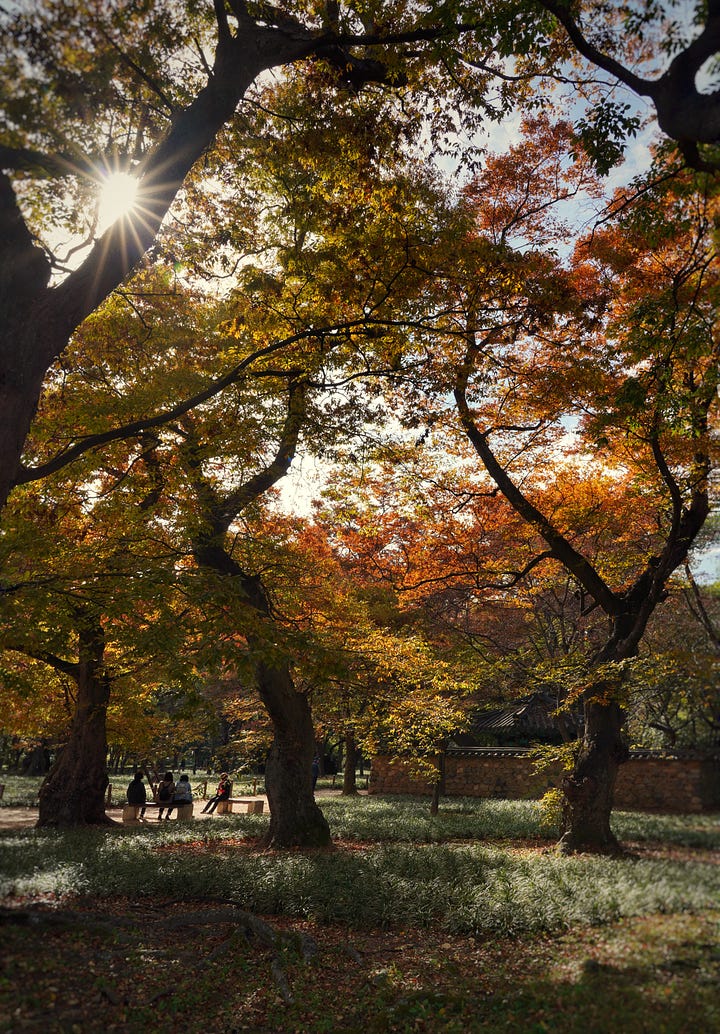
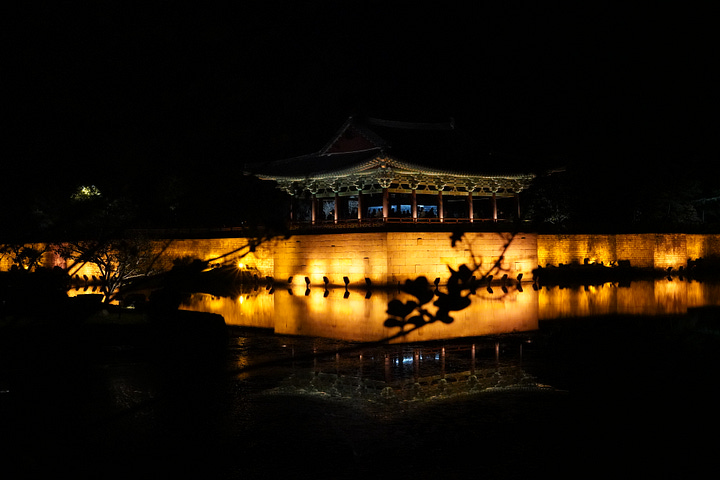

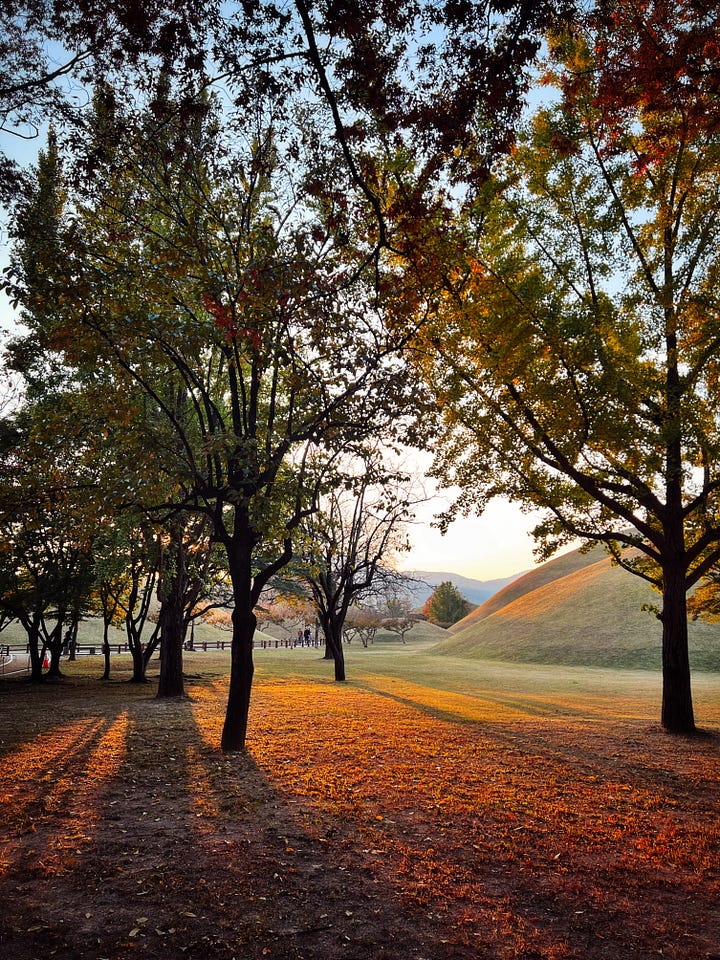
Busan is a playground
Of course, we went to Busan, and yes, we took the train (a very obvious reference to a Korean film here). You'll find every tourist in Busan at Gamcheon Culture Village. The main street is packed with people posing and taking selfies, but if you opt for one of the longer walking routes, it’s much less crowded.
Busan wasn’t quite showing off its autumn colours (we were too early), but it offers South Korea all over. We had a Korean night with street food, a photo booth with props, arcades, beers, soju, snacks, and coin karaoke. These karaoke booths are private, so you can practise your singing skills. We struggled to switch the controls to English.

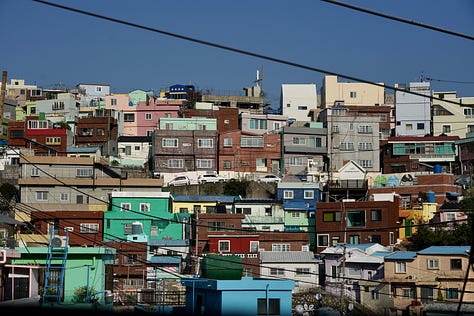
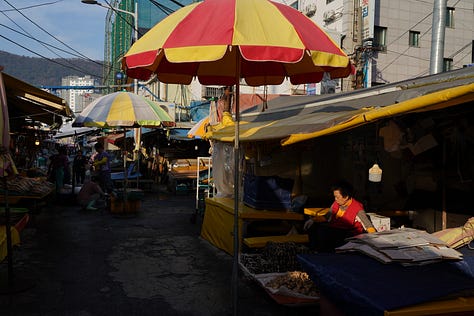
Early morning, I visited Jagalchi1 fish market alone. I could already smell the fresh fish from the metro station. The market is enormous, with some very exotic fish and seafood on display. You can have the fish prepared for you and eat it on the upper floor, but at 8:15 in the morning, clams didn’t quite appeal to me.
We stayed at Kimchee Busan Downtown Guesthouse. Don’t expect the best rooms, but do expect good advice on Busan and travel tips.
Hanoks in Jeonju
Jeonju is the birthplace of bibimbap and a charming historic city that feels like a relaxed open-air museum with beautiful sites. We even experienced a traditional tea ceremony. It even has more charm in autumn. Imagine traditional roofs, narrow streets, and courtyards framed by autumn colours, especially during golden hour.
For your itinerary:
A Hanok stay in Jeonju is almost a must. I agree, staying in a traditional house in a historic city like Jeonju is a great experience. We stayed in 2; one could be from an interior design magazine and the other one was more basic (read: thin mattress on the floor).
For some proper autumn hiking Naejansang National Park seems to be a great spot.
The Jaman Mural Village (자만벽화마을) is on walking distance. There is a nice café there!
On Friday and Saturday evenings the Jeonju Nambu Market is much fun. It’s just near the historic center.
Apparently Jeonju has its own beer culture called “Jeonju gamaek”. We had some good craft beers at Nomadic.
Mokpo (and the ferry to Jeju)
"Why are you in Mokpo?" the waiter asked. The only reason was the ferry to Jeju. We've heard that the flight route between Seoul and Jeju is the busiest in the world. We chose the ferry as it fit into our journey southwards, and I was charmed by an article I'd read.
Mokpo isn’t particularly special. We hiked up a mountain and struggled to find the cable car station. Of course we took it the wrong way, giving us a view of the other side of Mokpo.
The ferry to Jeju was quite entertaining. There’s a small arcade mainly for kids, though the karaoke booths were used by adults (myself included) and occasionally to calm screaming children. The massage chairs were a bit worn but functional, with some passengers simply napping in them. The highlight, however, was the restaurant. A plate of bibimbap with condiments was a bargain and tasted excellent.
Around the Vulcano of Jeju
Jeju is on many people’s travel lists, and I understand why—the island is stunning. We stayed in Jeju-si (the capital) instead of the more popular tourist destination of Seogwipo, as it was a laid-back choice being near the ferry port and airport.
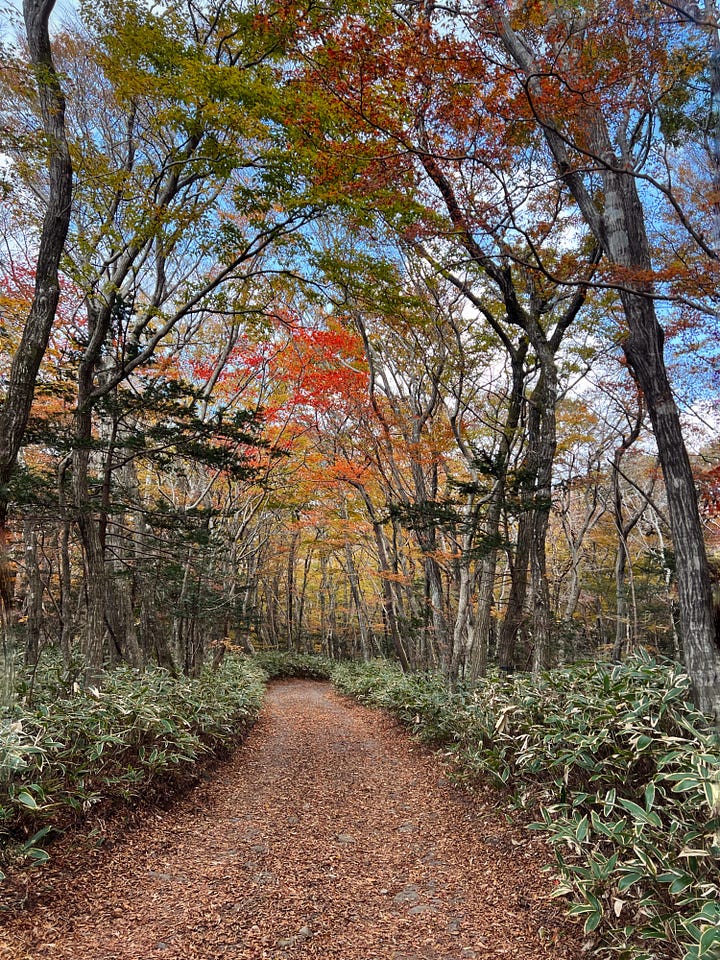
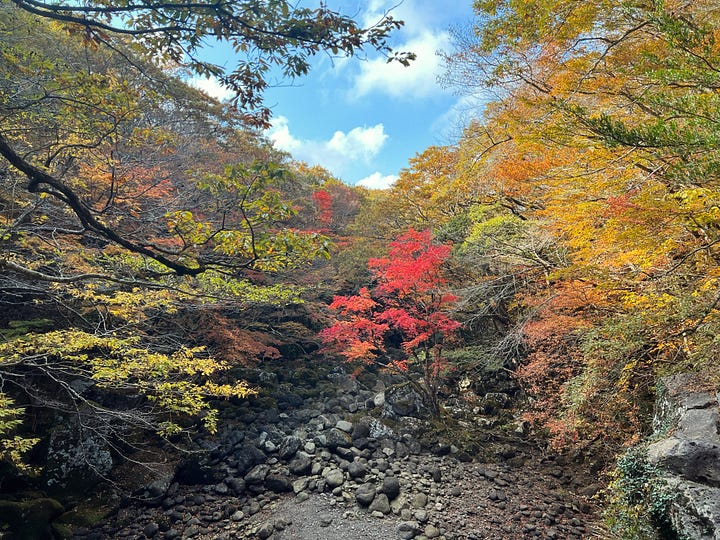
We did the Cheona Forest Trail near Hallasan National Park and were amazed by the autumn colours. The trail was surprisingly quiet—many tourists seem to focus on well-known spots like Seongsan Ilchul-bong, ignoring the rest.
Jeju take-aways
Jeju is also a popular destination for domestic tourists (similar to the Wadden Islands for the Dutch). Depending on what you want to do, you can spend a few days or even a week exploring. Renting a car is probably the best way to get around the island.
Although Jeju-si isn’t the liveliest city, I still have some recommendations. The night market is always worth visiting, and Magpie is a great spot for craft beer and food.
We went to Seongsan Ilchul-bong, and it’s an easy walk up the stairs, though some people made it seem more difficult than it is. The view is incredible.
For the Hallasan Dulle-gil Cheona Forest Trail, you can find the map on this site (put it to English). We walked the blue and white sections between the bus stops. For serious hikes up Hallasan itself, check out the official site and this blog.
Travelling by metro, train & bus in South Korea
First: Dowload the Naver app and put it to English (under settings). Google Maps isn’t used in South Korea.
Metro routes are easy to find in the Naver app (including which exit to take). You pay with a T-Money card. Local buses are also easy to plan with Naver.
Off course my friend in Seat 61 has info on train and ferry travel in South Korea.
Travelling by train is straightforward in South Korea. For planning, use the railway map. You can buy Korail tickets online or through the app.
On some routes you need to take a bus (in our case between Busan and Jeonju). Kobus is highly recommended, the bus was really comfortable. The hostel referred this one to us. Another bus company is TxBus.
Compared to the mainland, public transport on Jeju is not as frequent. So we ended up using taxis as well. You can use Uber in Korea. Another option is Kakao-T (but then you have to create a Kakao ID).
Watch, read or listen
Apparently, there is a fall foliage forecast for South Korea (just Google it and you will find some infographics). During the planning of the trip, I used this fall foliage guide.
As I have an obsession with Korean food, I also have a weak spot for lists. So here are some: one with 39 dishes, one with 45 and even one with 100.
In my search for autumn in Korea, I came across a lot of tips. I particularly liked this idea for a hike: Odaesan National Park Hiking Guide
As you have probably guessed, I’m a fan of Korean cinema. Besides the Seoul-based movies I can recommend Burning, The Handmaiden and Train to Busan.
Practice your karaoke skills with this K-Pop playlist (with backing vocals)
My journey as a travel writer
Part 4
Sometimes I doubt my plans for the book and even writing these newsletters. So many people are travelling and writing about it; it’s not that special. I suppose it takes a mix of endurance and routine.
Since this week, I have more time for writing (my recent freelance assignment as a scrum master ended), so I plan to rewrite and improve my stories. Where to start? And how to stay focused? I use a Trello board for my chapters, working incrementally (how agile of me). We’re all aware of phone and online distractions. I’ve experimented with putting my phone away, muting apps on my MacBook, and working in two-hour blocks, allowing time for coffee and switching between sitting and standing. It helped, though I realised two hours is a bit long for me to stay focused.
Struggling, but sticking to it.




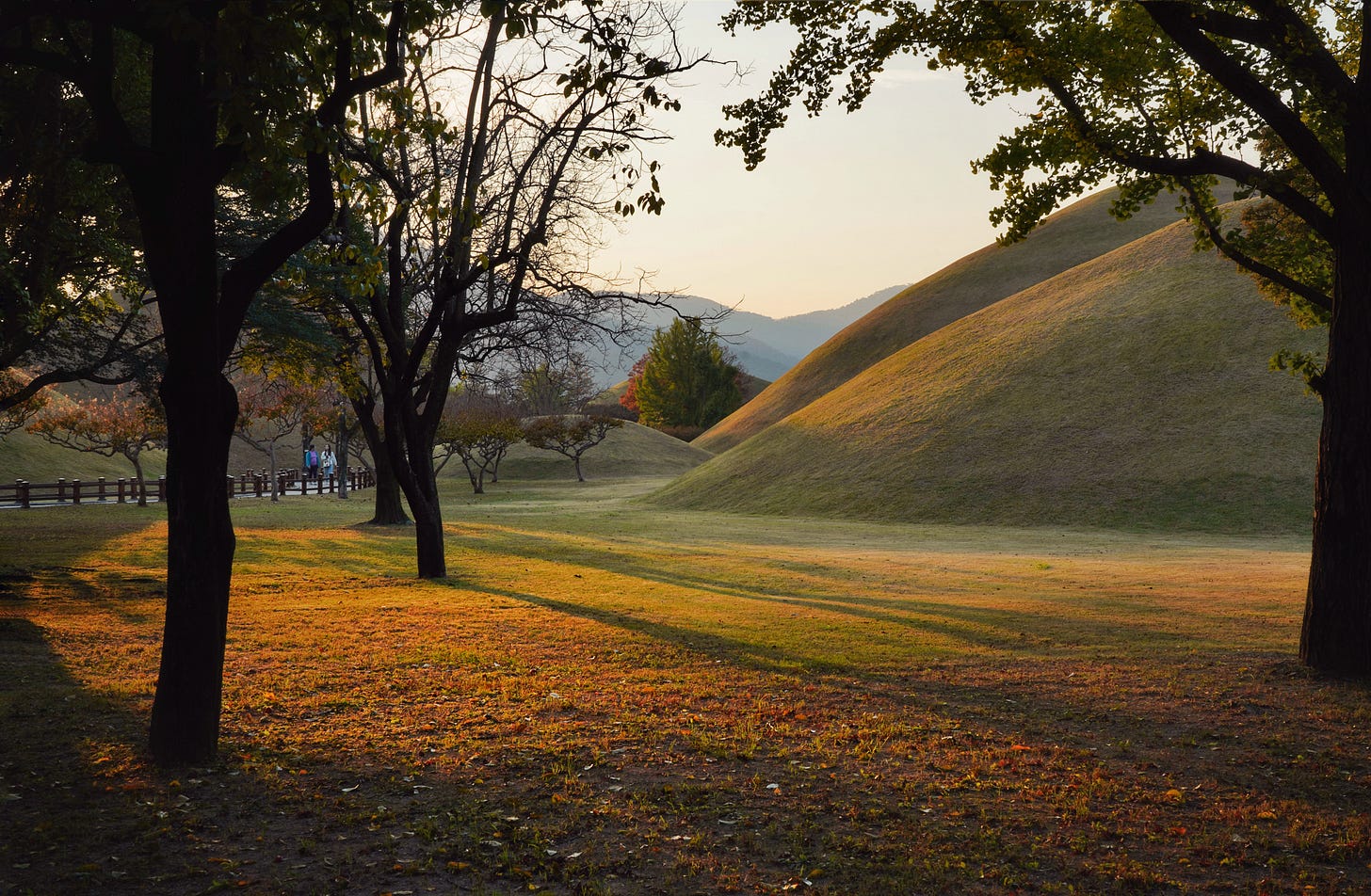

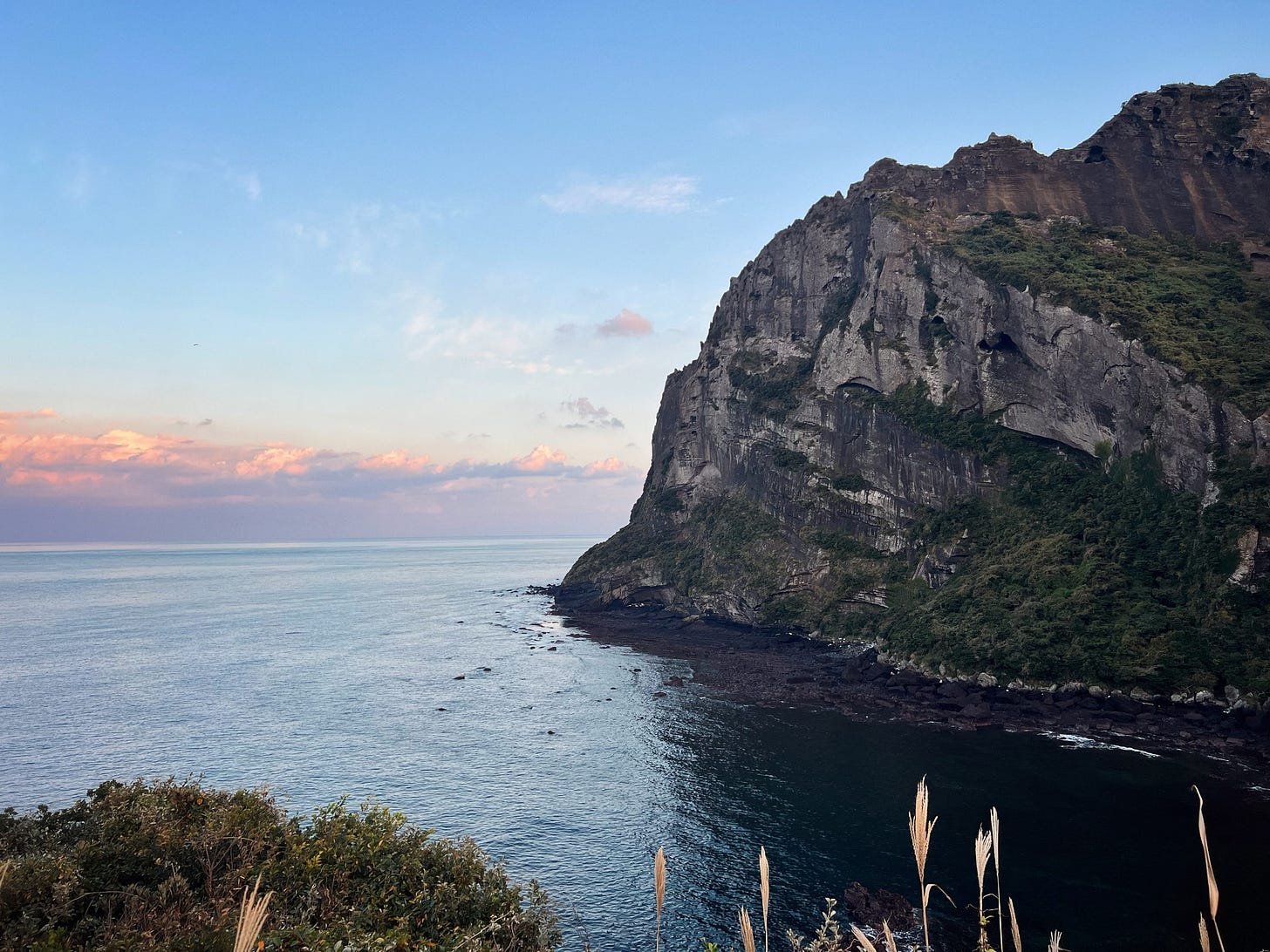

I would love to travel to and through South Korea. I’ve fallen in love with SK through many of their Netflix series I’ve been hooked on this past year. I was hoping to learn a little of the language, but had no idea how difficult it is.